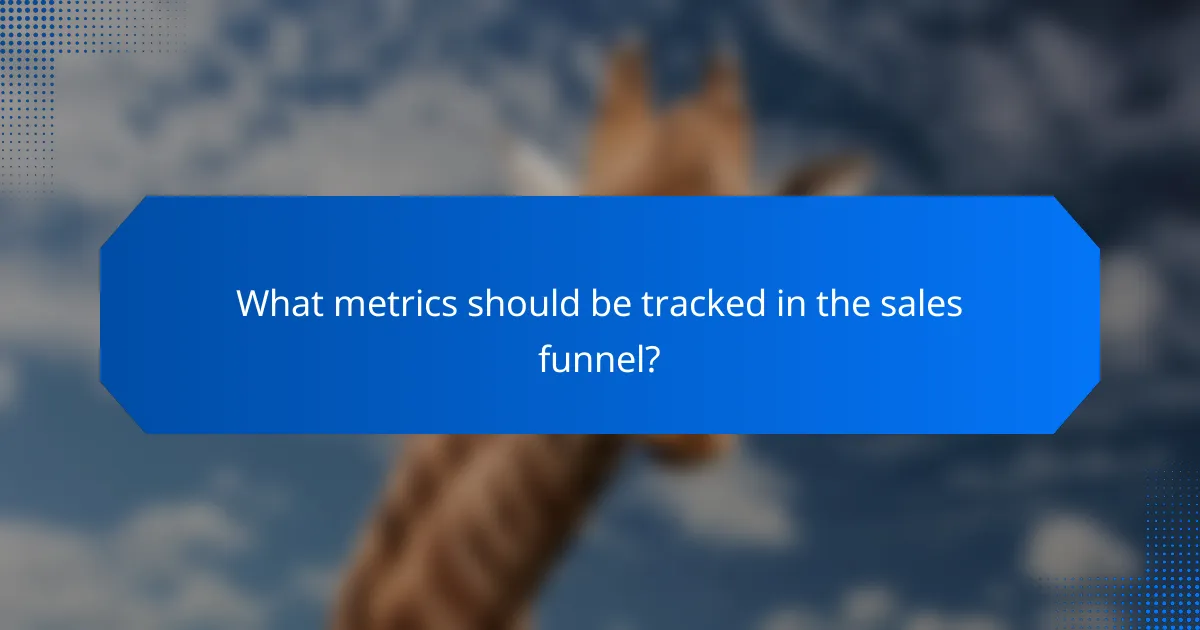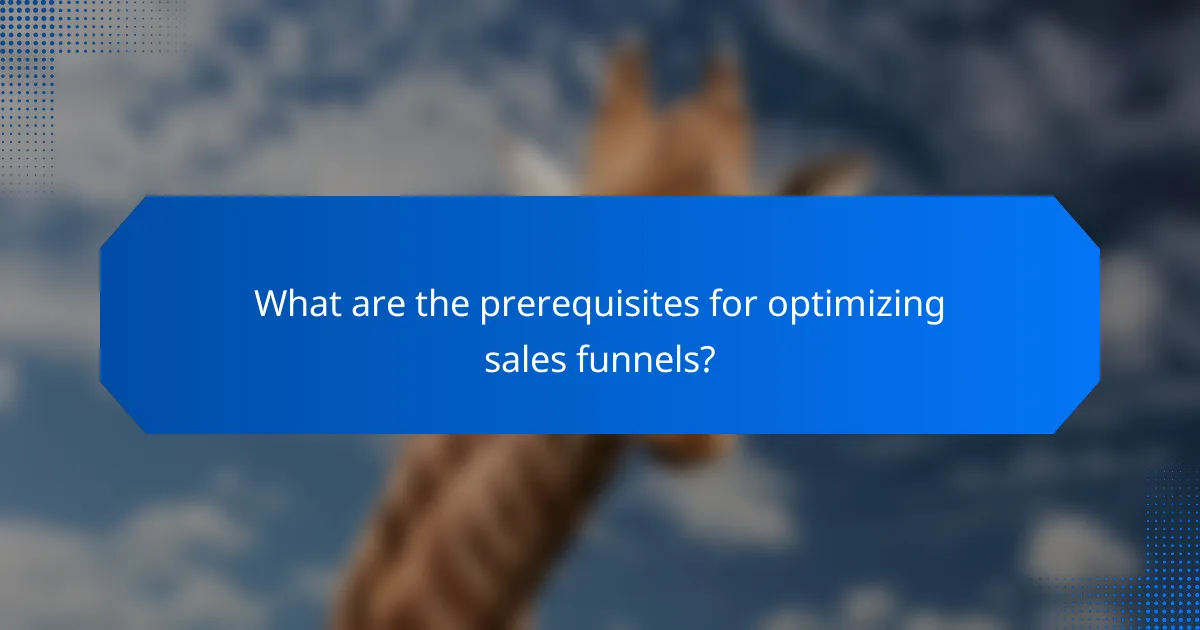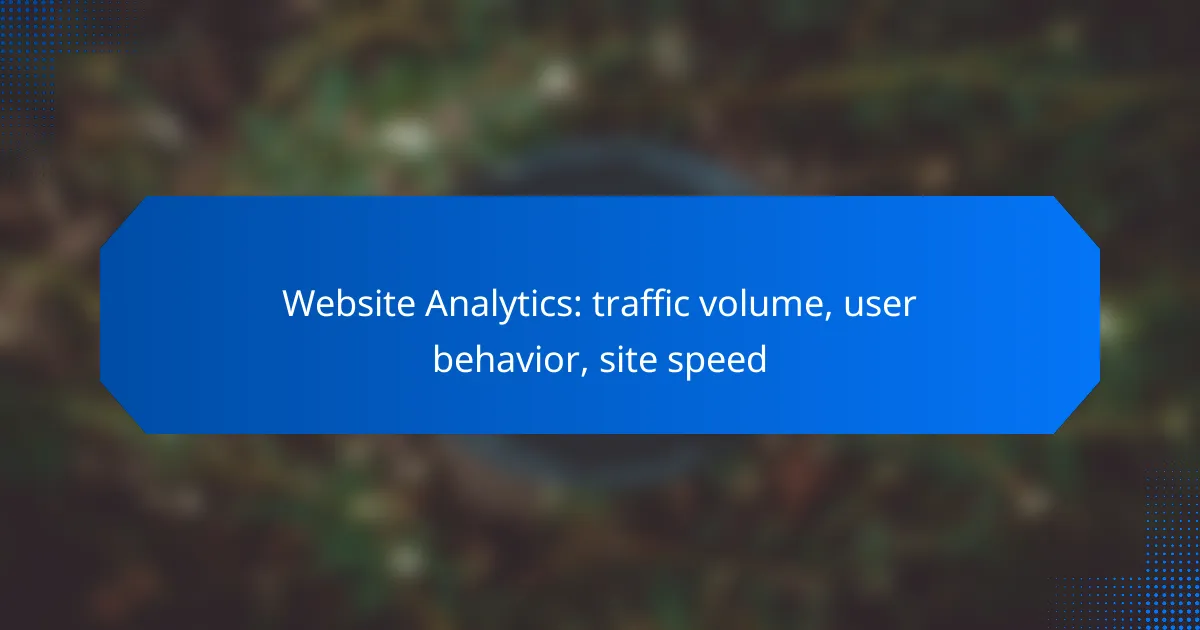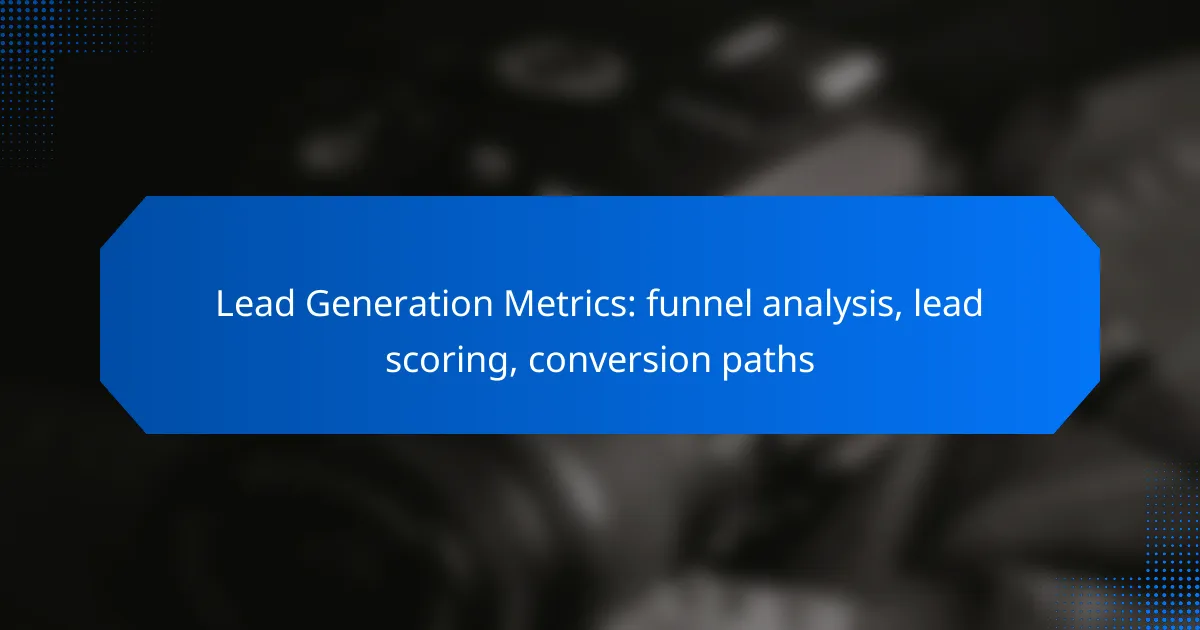
Sales funnel metrics are essential for understanding and optimizing the journey from lead to customer. By focusing on lead conversion, sales cycle duration, and the overall customer experience, businesses can implement targeted strategies that enhance engagement and drive sales. Analyzing these metrics helps organizations streamline their processes and improve overall performance in a competitive market.

How to improve lead conversion in Australia?
Improving lead conversion in Australia involves implementing targeted strategies that resonate with potential customers. Focus on understanding their needs and preferences to enhance engagement and drive conversions effectively.
Utilize targeted display advertising
Targeted display advertising allows you to reach specific demographics based on their online behavior and interests. By using platforms like Google Ads or Facebook Ads, you can create tailored ads that appeal directly to your ideal customer profile.
Consider using location-based targeting to ensure your ads are seen by users in Australia. This can significantly increase the relevance of your campaigns and boost conversion rates.
Implement A/B testing strategies
A/B testing involves comparing two versions of a webpage or ad to see which performs better. By testing different headlines, images, or calls to action, you can identify what resonates most with your audience.
Start with small changes and gradually implement the winning variations. This iterative process helps refine your approach and can lead to noticeable improvements in lead conversion rates.
Enhance landing page optimization
Optimizing your landing pages is crucial for converting leads. Ensure that your pages load quickly, are mobile-friendly, and have a clear, compelling call to action.
Use concise messaging and visually appealing designs to guide visitors toward taking action. Regularly review analytics to identify areas for improvement and test different layouts or content strategies.
Leverage customer testimonials
Customer testimonials build trust and credibility, making them a powerful tool for improving lead conversion. Showcase positive feedback prominently on your website and marketing materials to influence potential customers.
Consider using video testimonials or case studies to provide more engaging content. This can help potential leads relate to your existing customers and feel more confident in their decision to convert.
Utilize retargeting campaigns
Retargeting campaigns allow you to re-engage users who have previously interacted with your brand but did not convert. By displaying ads to these users across various platforms, you keep your brand top-of-mind.
Set up retargeting ads on social media and search engines to remind potential customers of your offerings. This strategy can significantly increase conversion rates by encouraging users to reconsider their initial decision.

What is the average sales cycle length in Australia?
The average sales cycle length in Australia typically ranges from a few weeks to several months, depending on the industry and complexity of the sale. Understanding this timeframe is crucial for businesses to manage their sales strategies effectively.
Typical sales cycle duration
In Australia, the typical sales cycle duration can vary significantly across different sectors. For instance, B2B sales often take longer, averaging around three to six months, while B2C transactions may close within a few days to weeks. High-value items or services usually extend the cycle due to the need for more extensive decision-making.
Sales cycles can be categorized into stages, including lead generation, qualification, proposal, negotiation, and closing. Each stage can take varying amounts of time based on the product and customer engagement.
Factors influencing sales cycle
Several factors influence the sales cycle length in Australia, including the complexity of the product, the decision-making process of the buyer, and market conditions. For example, products requiring significant investment or customization typically have longer cycles due to the need for thorough evaluation.
Additionally, the level of competition and economic conditions can impact how quickly a sale progresses. Businesses should also consider their sales strategies and customer relationship management practices, as these can either expedite or prolong the sales process.

How does the customer journey impact sales funnel metrics?
The customer journey significantly influences sales funnel metrics by shaping how leads progress through each stage. Understanding this journey allows businesses to optimize conversion rates and shorten sales cycles, ultimately enhancing overall performance.
Stages of the customer journey
The customer journey typically consists of several key stages: awareness, consideration, and decision. In the awareness stage, potential customers first learn about a product or service, often through marketing efforts like social media or advertisements. The consideration stage involves researching options, comparing features, and evaluating alternatives.
Finally, in the decision stage, customers make their purchase choice. Each stage requires tailored strategies to effectively guide leads through the funnel, ensuring they receive the right information and support at the right time.
Customer touchpoints in the funnel
Customer touchpoints are interactions that occur throughout the sales funnel, influencing the customer journey. These can include website visits, email communications, social media engagements, and direct sales calls. Each touchpoint plays a crucial role in shaping perceptions and driving conversions.
To optimize these interactions, businesses should ensure consistency in messaging and provide valuable content at each stage. For instance, offering informative blog posts during the consideration phase can help potential customers feel more confident in their choices, ultimately leading to higher conversion rates.

What metrics should be tracked in the sales funnel?
Tracking key metrics in the sales funnel is essential for understanding how effectively leads are converted into customers. Important metrics include conversion rates, customer acquisition cost, and sales velocity, each providing insights into different aspects of the sales process.
Conversion rates
Conversion rates measure the percentage of leads that successfully move through the sales funnel to become paying customers. This metric is crucial as it indicates the effectiveness of your sales strategies and marketing efforts.
To calculate conversion rates, divide the number of conversions by the total number of leads and multiply by 100. For example, if you have 100 leads and 10 convert, your conversion rate is 10%. Aim for a conversion rate that aligns with industry standards, which often range from 1% to 5% for many sectors.
Regularly analyze conversion rates at different stages of the funnel to identify bottlenecks. If certain stages have low conversion rates, consider refining your messaging or improving the customer experience at those points.
Customer acquisition cost
Customer acquisition cost (CAC) is the total expense incurred to acquire a new customer, including marketing and sales costs. Understanding CAC helps businesses assess the efficiency of their sales funnel and budget effectively.
To calculate CAC, sum all marketing and sales expenses over a specific period and divide by the number of new customers acquired in that same period. For instance, if you spend $10,000 on marketing and acquire 100 customers, your CAC is $100. Keeping CAC low is crucial for profitability, ideally aiming for a ratio where the lifetime value of a customer is at least three times the CAC.
Monitor CAC regularly to ensure your acquisition strategies remain cost-effective. If CAC rises significantly, investigate the causes, such as increased advertising costs or ineffective marketing channels.
Sales velocity
Sales velocity measures how quickly deals move through the sales funnel, providing insights into the efficiency of your sales process. It combines several factors, including the number of opportunities, average deal size, win rate, and sales cycle length.
To calculate sales velocity, use the formula: (Number of Opportunities x Average Deal Size x Win Rate) / Length of Sales Cycle. For example, if you have 50 opportunities, an average deal size of $2,000, a win rate of 20%, and a sales cycle of 30 days, your sales velocity would be $1,333.33 per day.
Improving sales velocity can lead to increased revenue without necessarily increasing the number of leads. Focus on shortening the sales cycle and increasing the win rate through better training, tools, and customer engagement strategies.

How to analyze sales funnel performance?
Analyzing sales funnel performance involves evaluating key metrics such as lead conversion rates, sales cycle duration, and customer journey stages. By systematically assessing these metrics, businesses can identify strengths and weaknesses in their sales processes, leading to improved efficiency and higher conversion rates.
Utilize analytics tools like Google Analytics
Google Analytics provides valuable insights into user behavior at various stages of the sales funnel. By setting up goals and tracking conversions, businesses can see how many visitors become leads and how many leads convert into customers. This data helps identify drop-off points where potential customers lose interest.
To maximize the effectiveness of Google Analytics, focus on metrics such as bounce rates, average session duration, and conversion rates for specific landing pages. Regularly reviewing these metrics can reveal trends and areas for improvement, enabling targeted adjustments to marketing strategies.
Implement CRM systems for tracking
Customer Relationship Management (CRM) systems are essential for tracking interactions with leads throughout the sales funnel. These systems allow businesses to manage customer data, monitor sales activities, and analyze conversion rates effectively. A well-implemented CRM can streamline communication and ensure no lead is overlooked.
When choosing a CRM, consider features like automated reporting, integration with other tools, and user-friendliness. Regularly updating and maintaining the CRM database is crucial for accurate tracking and analysis. Avoid common pitfalls such as neglecting data entry or failing to train staff on the system’s capabilities.

What are the prerequisites for optimizing sales funnels?
To optimize sales funnels effectively, businesses must first understand their target audience and the specific metrics that influence lead conversion and the sales cycle. This foundational knowledge allows for tailored strategies that enhance the customer journey and improve overall sales performance.
Understanding target audience
Understanding your target audience is crucial for optimizing sales funnels. It involves identifying the demographics, preferences, and pain points of potential customers. By gathering this information, businesses can create more relevant marketing messages and offers that resonate with their audience.
To effectively understand your audience, consider using surveys, interviews, and social media analytics. These tools can reveal insights into customer behavior and expectations. For instance, if a significant portion of your audience is young professionals, tailoring your messaging to highlight convenience and efficiency can lead to higher engagement.
Additionally, segmenting your audience based on their characteristics can enhance targeting efforts. For example, you might categorize leads by age, location, or buying habits. This allows for personalized marketing strategies that can significantly improve conversion rates.


